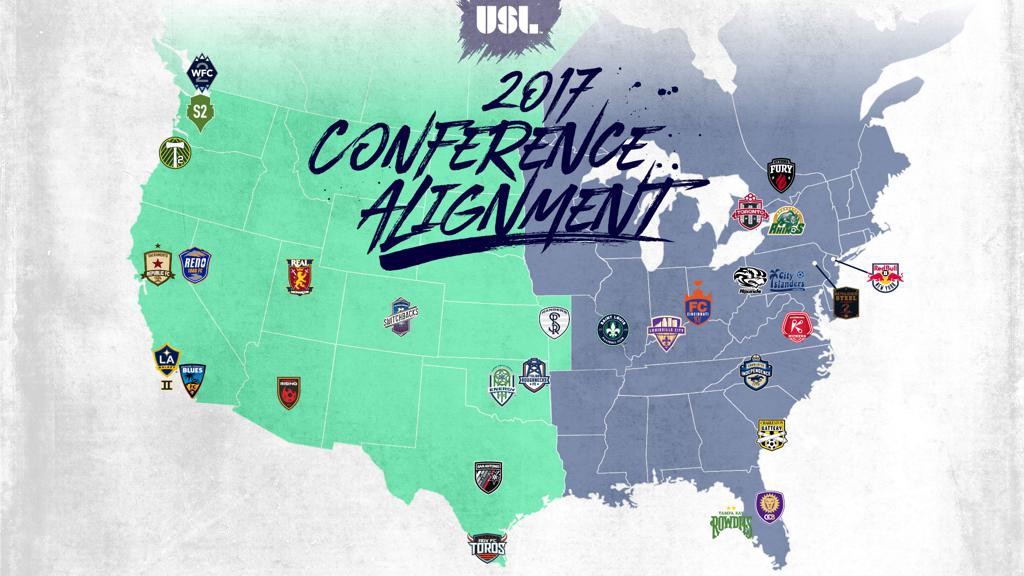Thoughts from USL president Jake Edwards on a decision that raises more questions than it answers

“They have the numbers; we, the heights” is a famous reference to a battle advantage born of advantageous position, spoken by the Spartan commander at Thermopylae. It might have served, up until this weekend, as a justification for NASL’s current run of existence. USL may have more teams and, particularly in the form of Sacramento and Cincinnati, more exciting testaments to what an American soccer audience can be, but NASL’s reputation of late has come from the heights of its Division 2 status in the USSF soccer pyramid, whereas USL was merely Division 3.
This past Friday’s U.S. Soccer announcement, that the two leagues now share Division 2 status, effectively gives USL heights as well as the numbers in what might be a slow-motion-in-real-time reshuffling of the American soccer pyramid, which could effectively, ultimately shake out NASL altogether.
The announcement does provide NASL a short-term lifeline, though, allowing the league to move forward with an eight-team plan for 2017 that includes the linchpin Cosmos (as well as the expansion San Francisco Deltas). Yet, the ranks of teams are thinning: The Fort Lauderdale Strikers and Rayo OKC franchises are conspicuously absent from the announced 2017 roster, while the Tampa Bay Rowdies and Ottawa Fury made 2016 their final NASL seasons by defecting to USL. (USL’s October release on the Rowdies/Fury moves called them “renowned North American soccer brands” who seemingly happened upon USL to join them as expansion franchises for the ’17 season.)
Some see rooting against NASL’s continued existence as tantamount to rooting against American soccer itself, so even a winnowed-down NASL should be a heartening sign to soccer proponents, even if some see it as a prelude to the league’s inevitable demotion to Division 3 or even its end. Ben Bromley speculates in SB Nation’s Red and Black United site that U.S. Soccer doesn’t “want it to be their action that ends the NASL, because USL will continue to grow and prosper, while a D3 sanctioning would have immediately killed NASL.” While he dismisses the Friday decision as “kicking the can down the road,” it does buy all parties needed time and a year’s more data to honestly assess their respective places in the pyramid, joining those who already did in 2016.
For USL president Jake Edwards, who I spoke to over the weekend, the D2 decision for USL is a “validation,” and bolsters negotiations underway with broadcast partners as well as additional markets that USL is eyeing for inclusion into the growing league. While he notes that online streaming will still be part of the league’s plans to get its matches in front of soccer fans, D2 status will likely allow the league to improve upon last year’s ESPN3 announcement to counter NASL’s broadcast partnership with BeIN Sports.
USL has also floated a three-conference plan which could be implemented as early as 2018, and though Edwards isn’t indicating a firm number at which the league would be capped, he grants that the three-conference model would allow for the neighborhood of 36 to even 45 teams—still more franchises than comprise typical North American sports leagues.
Still, though, he cautions that the league doesn’t want “growth for growth’s sake,” and notes that teams with USL aspirations will need stadiums or actionable stadium plans to be considered. The league’s growth model has been built in part on regional rivalries, and while about a third of the league’s teams are directly descended from parent MLS clubs (some even deviating slightly from the Timbers 2/Sounders 2/Whitecaps 2 nomenclature), Edwards sees a future trending toward independently-owned clubs seeking player development relationships with parent MLS clubs, the way that the Rio Grande Valley’s RGVFC has partnered with the Houston Dynamo. While USL does position itself as an independent league, it’s not a stretch to make the major leagues-AAA baseball analogy when pondering the MLS-USL future, though Edwards (in an observation that should prove heartening to the ever-hopeful American pro/relerati) sees them more as a Premier League-Championship tandem.
Edwards also sees a healthy USL as a place where future national team players can flourish—with a league average age of 23 1/2, USL is an obvious destination for the U-19, U-20, and U-23 players, who aren’t Christian Pulisic or Josh Perez, to learn, grow, and ready themselves for first-team selection with MLS or other top-tier leagues. Edwards cites current Whitecaps defender Tim Parker as a recent example of a player who has used USL experience to springboard to a national team camp call-up. With USL moving into Division 2 status (and U.S. Soccer moving more firmly into the Arena arena), it’s certainly viable that USL figures more broadly into player development in the coming years.
Ultimately, the co-D2 announcement leaves the landscape only slightly less unsettled than it was in the weeks prior. Questions persist about how large USL can get, what kind of TV audience it might find, whether fans drift from a shrinking NASL, and which NASL franchises would be poised to survive should some future merger take place. In American soccer’s ongoing pursuit of both audience numbers and tournament heights, fortifying the pyramid is undoubtedly important, and Friday’s announcement should prove to get us one step closer.

